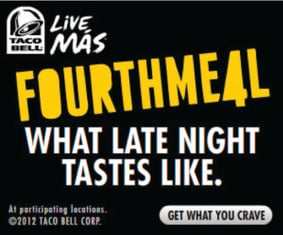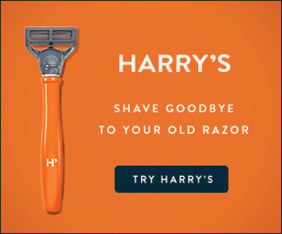Fact & Fiction In Display Advertising

By Lindsay Arnold
Anyone with access to a search engine can claim that they know "all about" the best practices when it comes to advertising online.
The Internet has made so much information readily available that anyone can enter in a few keywords, and embark on a personal journey toward becoming a digital wizard. This has allowed the 'Net industry to grow exponentially, but there is one major downfall - the high and very real risk of being misled.
People are susceptible to believing anything and everything they read online. While advertisers looking for genuine guidance don't have to ignore everything they find on the Web, it is important to think twice before implementing every new tactic and technique they discover.
To help separate fact from virtual fiction, here are some commonly spouted display advertising tips, which could use some second thought.
CTR is the key metric for display success
With any new campaign most marketers are hoping to see their numbers increase immediately - meaning more click-throughs, more conversions and, of course, more return on their investment.
Consumers, however, don't always click through - at least not right away. It is more likely they will make a mental note; perhaps do some research on the product/service, and just wait to move forward with their purchase. It is during this time that it is most important for the advertiser to stay top-of-mind and engage with the consumer (with tactics like remarketing).
The more reach a brand has with its display advertising and digital marketing efforts, the more engaged the targeted consumer will feel - leading to higher chances of a conversion in the future.
The more banners there are online, the more banner blindness will occur
The sheer volume of competition in display advertising can be pretty overwhelming. Through display, retargeting and social media, no channel is untapped. This is what leads people to believe that consumers are prone to "banner blindness," especially with reports stating that the average click-through rate (CTR) of a banner ad is only 0.1 percent.
It's true that there are more ads than ever working to reach each viewer's attention, but this should be seen more as motivation to do better than a reason to give up. In fact, online advertisers can now even take advantage of their competitors' strategies - with competitive intelligence.
Competitive intelligence tools (including iSpionage, AdBeat and others, including WhatRunsWhere) exist to help brands analyze what their competition is doing with their own online advertising strategy. These tools provide data as to what is or is not working for one's competitors or top advertisers in any given industry. In this regard, the more ads there are online, the more resources one can use to make their own campaigns better.
GOOGLE BECOMES TRANSPARENT
See how the tech giant is being accountable for "viewability" at wsm.co/vidgoog Google is the best bet for media buying
Google is by far the leader in search-based advertising, and as a result, advertisers often assume it is the only ad network worth testing. Allowing Google to monopolize all of one's paid advertising means that they are missing out on the great opportunities that other networks hold.
By using other networks an advertiser could find: more traffic, more targeted engagement, cheaper cost-per-click (CPC) or a variety of other benefits that could end up boosting their overall ROI.
A well-designed banner = more clicks
The nicer something looks, the more likely it is that it will catch a viewer's attention - makes sense, right? Against all logic, this isn't necessarily true for banner advertising.
Consider this: If an advertiser posts an attractive banner ad on a professional-looking Web page, no one will be drawn to the ad - it will just blend in. Conversely, an amateur-looking advertisement will catch the attention of the viewer due to its contrast in style from the Web page (see Image A and B).


Images A & B: These ads from Tophatter and Wayfair are both telling examples of banners that are eye-catching, but not overly polished. They are likely to stand out when placed on any website.
That said, there still needs to be a strategy for the banner's creative. All the same rules apply in regard to proper branding, copy length and graphics - the countless hours polishing and editing just don't necessarily have to be invested.
Graphics are more engaging than text
When most people think of display advertising, they think of something that's image-based. Generally it's a product shot, or a visual of an actual person using the product (while looking and smiling right at the viewer of course).
It's true that this can be very engaging, but the same can be said about a type-based display ad. Why not engage the consumer through a witty statement? Or by asking them a question? Make them think by using the right copy (see Image C and D).


Images C & D: Both Taco Bell and Harry's effectively use text as the hero of the ad instead of the product. Rather than an image, Taco Bell relies on its catchy tagline, whereas Harry's uses a product image but reduces its importance by using the same color in the background - giving more importance to its choice of copy.
Research with Caution
Remember that there are always two sides to every display marketing tip. What works for one advertiser, may not work at all for another. Research is important, but testing is the only way you will find what actually works.
Lindsay Arnold has a background in creative advertising and sociology. She is the marketing coordinator at WhatRunsWhere. Connect with Lindsay via Twitter @WhatRunsWhere and @lindsaydarnold.










